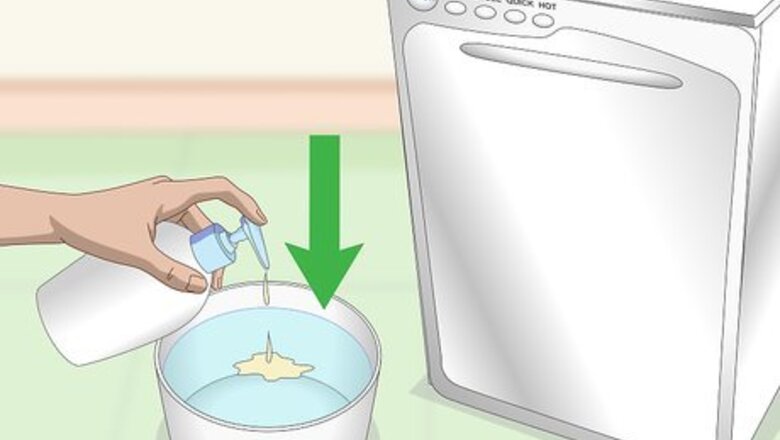
views
Rinsing with Soap and Water
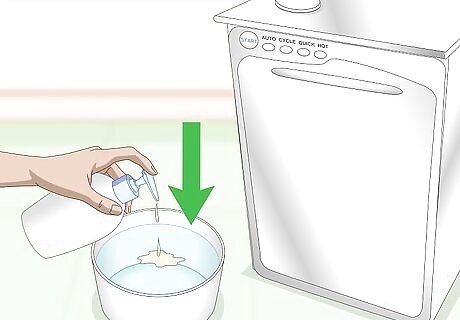
Mix dish soap and water in a bucket. You can use your regular dish soap to give the dishwasher a routine rinse. Stronger soaps designed to cut grease are helpful if the machine has tough stains or caked on solids. Fill the bucket with warm water, then stir in about 1 US tbsp (15 mL) of soap until the water is nice and sudsy. You can also try glass cleaner. Glass cleaner works best on stainless steel surfaces.
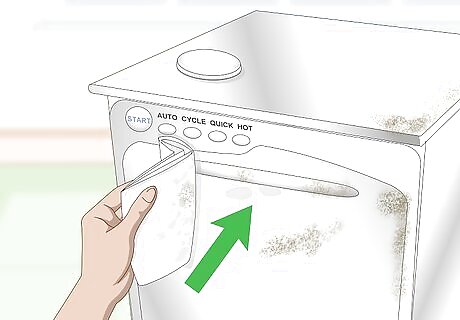
Wipe grime and fingerprints off the outside with a paper towel. Dampen a paper towel, soft cloth, or sponge in the soapy water. Wring out excess moisture to avoid leaving a mess on the floor. Then, scrub and dry the door frame. Be sure to pay extra attention to the corners and handle, which may accumulate plenty of hidden grime. Avoid splashing lots of water or glass cleaner on the door. Many dishwashers have electronic components that can be damaged by excess moisture. Apply the cleaning solution to a cloth or sponge first.
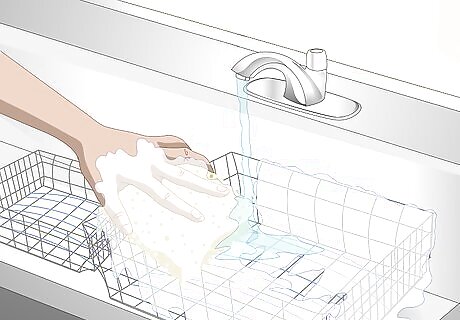
Wash the racks and utensil caddies in the sink. If you use your dishwasher regularly, chances are you will see solids coat these surfaces at some point. Slide the racks out from the door and lift them to remove them from their tracks. Pick up the utensil holders to remove them as well. Use paper towels to clean off any food particles, then finish cleaning the components with soap and hot water. If you neglect these parts, they will quickly dirty up your dishwasher no matter how well you clean its insides. Wipe them down regularly to keep the drain clean.
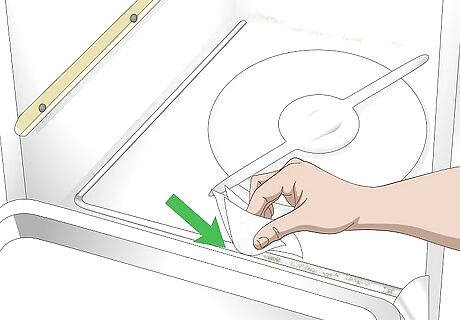
Wipe down the drain to remove solid matter and grease. Locate the drain on the dishwasher’s floor. Solid debris and grease lead to big problems if they are allowed to accumulate. Use paper towels to wipe away as much as you can from the drain. Follow up by rinsing off the remainder with soap and water. Anything from tomato chunks to shells and broken glass can block the drain. Get rid of them as soon as possible to avoid permanent damage to your pipes or dishwasher. Clogs are often responsible for slow-draining dishwashers. Wiping the drain periodically can save you a call to a plumber.
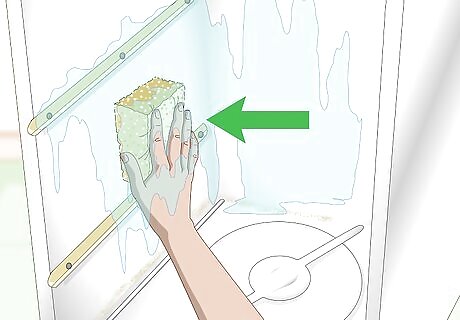
Wash the dishwasher’s walls and inner door. Like with the dishwasher’s base, remove solid debris from the sides first. After taking away as much as you can with paper towels, rinse the remaining surfaces with soap and water. Tougher stains on the walls may require additional treatment, such as from a wash cycle with vinegar or baking soda.
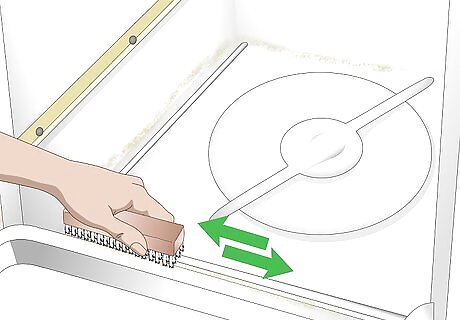
Scrub had to reach areas with a brush. The areas around the door, such as along the corners and around the hinges, can collect plenty of grime. A kitchen brush will work well, but if you don’t have one, you can also use an old toothbrush. Dip the brush in the bucket of warm, soapy water and use it to eliminate any remaining debris. Water may not reach these areas when you run the dishwasher. The only way to clean them out is to pay close attention when cleaning the dishwasher by hand.

Rinse off any soap with clean water. Remove all dish soap before operating the machine. Dampen a clean cloth or paper towel under running water, then wipe down all the surfaces and components you washed. Your dishwasher will look much cleaner already. Dish soap can clog up the dishwasher’s components, so play it safe by rinsing off as much of it as you can.
Scrubbing Rinse Cycle Components
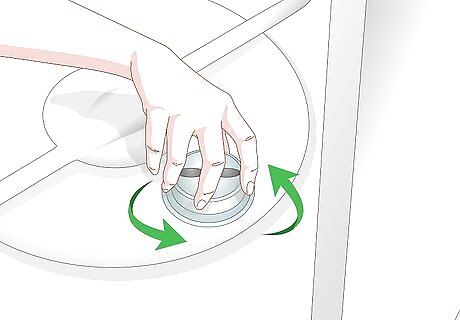
Unscrew the filter system if your dishwasher has it. Filter systems differ from dishwasher to dishwasher, but they are all located on the dishwasher’s base. Look underneath the rotating spray arm. You may see a large, gray disk with a smaller cylinder sticking out of it. Twist the cylinder counterclockwise to remove it, then do the same with any parts underneath it. Most filter systems consist of several interlocking parts. Check your owner’s manual for precise instructions on how to remove them. The filter grinds up larger food scraps so they don’t get caught in the drain. This means the filter can easily get clogged and start to stink, so check it often to keep it in working order.
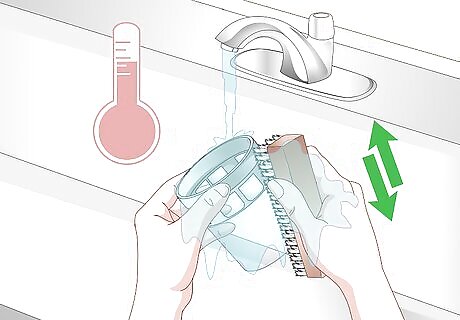
Scrub the filter parts with a brush under warm water. Rinse each part off individually in the sink to remove as much solid matter as possible. Wipe the components down with a paper towel or sponge, then check them over for remaining debris. You may still notice clogs from smaller particles like dirt and coffee grounds. Use a kitchen brush or old toothbrush to knock this debris off the filter. If you have a faucet or hose with a strong spray setting, make use of it to eliminate debris in tough to reach areas.
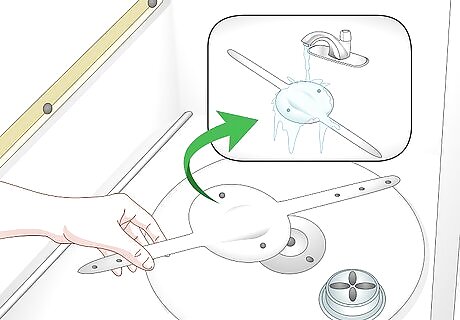
Remove the spray arm from the dishwasher and rinse it. Even if your dishwasher doesn’t have a separate filter, it will have a spray arm. Look in the center of the floor. The sprayer looks like a plastic propeller blade. All you have to do is lift it up to pop it off of its moorings. Then, clean it off under warm water in the sink. Wipe away any food particles you see so they cannot clog the sprayer’s holes.
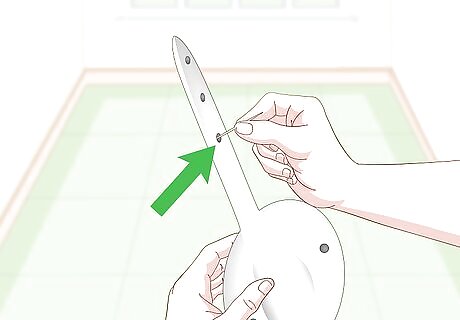
Clear the spray arm’s holes with a toothpick. The series of holes on top of the spray arm disperse water into the dishwasher’s compartment. You may also see another hole on the underside that shoots water into the filter. These holes can get clogged sometimes, so you will need to pick out the food particles before reinstalling the sprayer and filter. You can also use hanging wire or wood skewers to clear the holes. If your dishes don’t seem to get very wet or clean when you operate the dishwasher, a clogged spray arm may be the cause.
Removing Tough Stains and Odors
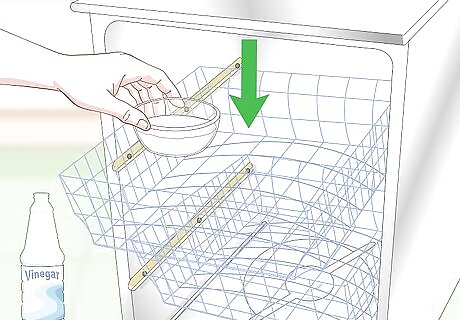
Place a cup of white vinegar on the top rack. Put the dish racks and other components back in the dishwasher if you took them out for cleaning. Then, choose a dishwasher-safe container such as a bowl or measuring cup. Fill it with up to 2 cups (470 mL) of vinegar for a safe and efficient way to give your dishwasher a deep cleaning. Vinegar is effective at removing stubborn grease and grime as well as bad odors. Try using it if you can’t get your dishwasher pristine with soap and water alone. You can also use store-bought cleaners. Many liquid additives are stronger than vinegar and more effectively treat mineral discolorations.

Run a rinse cycle using the hottest water setting possible. Close the dishwasher door and set it for a normal cycle. The hot water will dilute and disperse the vinegar, giving your dishwasher more of a shine. When the cycle ends, let the water drain, then check to see how clean your dishwasher looks. You may need to run the dishwasher through multiple cycles before it is completely clean and odorless. Add more vinegar as necessary.
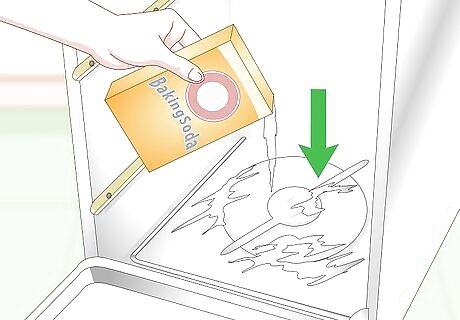
Sprinkle baking soda on the dishwasher floor for additional cleaning. Baking soda is an effective way to remove tough stains and odors left over after a vinegar wash. Distribute 1 cup (180 g) of baking soda evenly over the bottom of the dishwasher. Pull the dishwashing racks and caddies out so you can spread the baking soda, but don’t remove them. Baking soda is slightly abrasive, so it will clear up any food particles remaining in the dishwasher.
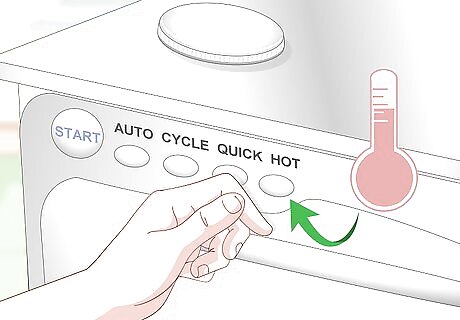
Set the dishwasher for a short cycle with hot water. Since baking soda is abrasive, avoid using it in longer rinse cycles. For a thorough cleaning, use the hottest water setting possible. When the cycle ends, the dishwasher may be spotless and odorless. If the dishwasher still isn’t clean, you may need to use a stronger cleaner. More vinegar, lemon juice, or a commercial cleaner can help. Avoid using more baking soda.
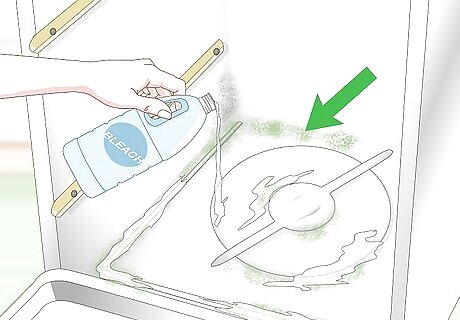
Spread bleach on the dishwasher’s floor to get rid of moldy stains. Ugly green, brown, or black spots are signs of mold. Vinegar and baking soda may not be enough to cleanse them. Instead, pull out the dish racks so you can access the dishwasher’s interior. Distribute ⁄2 cup (120 mL) of bleach evenly across the floor, then put the racks back into position. If your dishwasher is stainless steel, avoid using bleach! Bleach will cause serious damage. Instead, scrub the spots off with plenty of warm water, soap, and commercial cleansers. Use no more than 1 cup (240 mL) of bleach at a time. Be careful, since bleach is caustic and the fumes are unpleasant to breathe in.
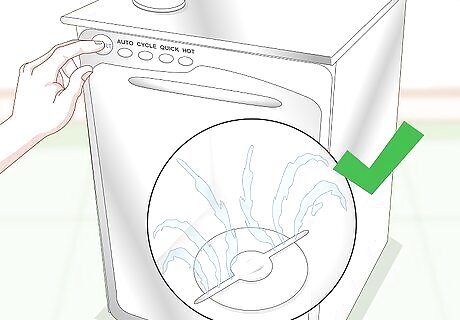
Run the dishwasher on a normal, full cycle to finish cleaning it. Close the door and turn on the dishwasher. Set it for a medium-length wash cycle using hot water. The water will dilute the bleach so it doesn’t damage your dishwasher’s interior. Bleach is the most effective way of eliminating mold and mildew spores. Have some available in case vinegar and baking soda do not work. Never mix bleach with vinegar. Combined, the products create toxic chlorine gas. Use each cleaner separately, rinsing out the dishwasher each time.












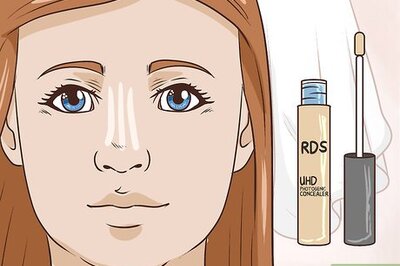






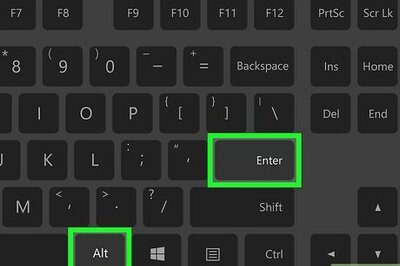
Comments
0 comment